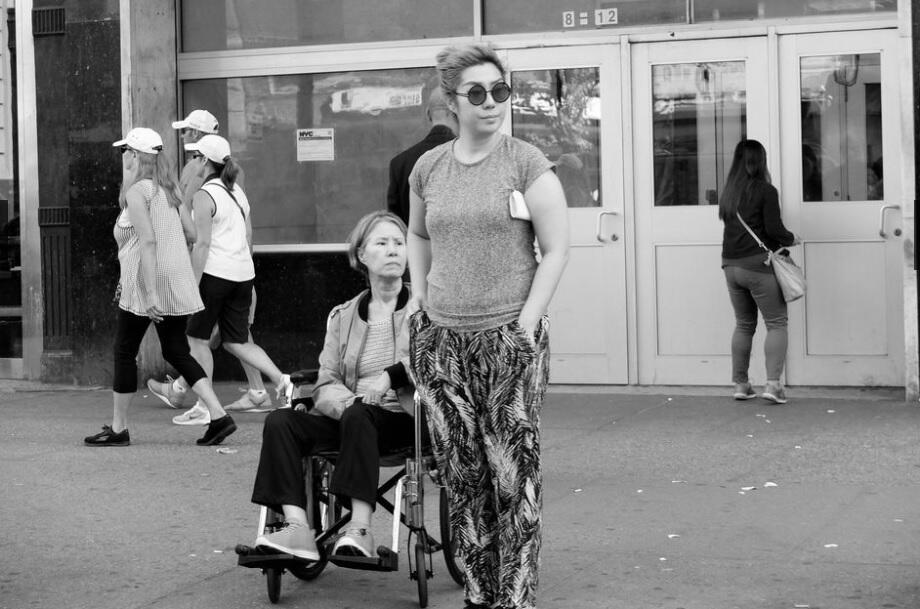Inequality is justly recognized as a complicated term since this social phenomenon has a complex structure and comes from multiple sources. As is demonstrated in the experiment by Walters, inequality has many looks and is viewed through the prism of people’s unique experiences. My understanding of this concept is influenced by Ellen Rosen’s photo of a chairbound woman who needs help to deal with everyday tasks.
The selected photo depicts a middle-aged woman with a physical disability, her daughter, and five bypassers who do not seem to notice that there is a person who cannot walk at all. It was taken by Ellen Rosen in 2018 and received a few enthusiastic comments (see fig.1). The photo reminds me of my online friend who has a disabled mother, and it has helped me to finally formulate my understanding of inequality. As for me, it can be defined as being deprived of something so basic that other people even fail to recognize it as an advantage.
The woman is waiting for the transport to get home, whereas other people are just passing by without looking at an unusual person and asking if everything is good or if she needs some help. Unlike her, they do not need others’ assistance to get to another place safely, and this manifestation of inequality remains unnoticed. Living with a disability or a visible deformity immediately involves a range of everyday struggles, doubts, fears, and issues that the majority of people do not understand. In many countries, there are resources to make city architecture decisions concerning physically challenged people’s needs, but comfort for all people does not always become an official strategy. For instance, my penfriend from an East European country lives in an apartment building with no wheelchair ramps, and she struggles a lot when helping her mother to go out. Unfortunately, despite local improvements, we, humanity, continue to see a perfectly healthy person as the first category that deserves attention and recognition.

Works Cited
Rosen, Ellen. “Waiting for Her Ride Home.” Your Shot (National Geographic). 2018, Web.
Walters, Helen. “Gallery: What Inequality Looks Like.”TED. 2014, Web.